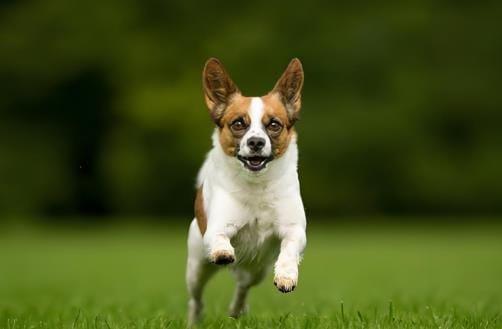
How to Teach a Dog to Come to You in Any Environment
I need to figure out how to teach my dog to come when called no matter where we are. Let me start by thinking about what I know. I remember that training a dog requires consistency and positive reinforcement. But how do you make sure they listen in different places? Maybe start in a quiet place and then add distractions?
First, I should probably choose a command word. I’ve heard “come” is common, but maybe some people use other words. It should be something clear and consistent. Maybe use their name followed by the command, like “Buddy, come!”
Next, positive reinforcement. Treats, praise, toys. But how much? Do I give a treat every time at first, then phase it out? Or keep mixing it up so they don’t know when they’ll get a treat? I think starting with high-value treats makes sense. Like something they really love, not just regular kibble.
Then, practicing in different environments. Start at home, then backyard, then a park, maybe a busy street. But how to transition between these? Maybe gradually increase the distractions. If the dog gets distracted, does that mean I moved too fast? Maybe I need to go back to a less distracting environment if they fail.
Leash training could help. Using a long leash in a park to give them some freedom but still have control. If they don’t come, I can gently reel them in. But I shouldn’t punish them if they don’t come, right? Because that would make them not want to come. So even if I have to pull them in, still reward them when they get to me.
Adding distractions is tricky. Start with mild ones, like a toy nearby, then maybe another person or dog. Practice the command when they’re slightly distracted and reward heavily when they obey. Gradually make it harder.

What about emergencies? Teaching an emergency recall with a different command, maybe a whistle or a specific word. Use an extra special treat they only get for that.
Consistency is key. Everyone in the family should use the same command and not use it for negative things, like bath time if the dog hates baths. Otherwise, the dog might associate the command with something bad.
Troubleshooting: if the dog doesn’t come, maybe the environment is too distracting, or the reward isn’t motivating enough. Go back a step. Never scold them when they come, even if it took a long time.
Also, practicing regularly but keeping sessions short to maintain their attention. Maybe a few minutes several times a day.
Wait, what about off-leash training? That should come after they’re reliable on a long leash. And always check safety, like a secure area first.
I should also consider the dog’s age and breed. Puppies might have shorter attention spans, some breeds are more independent. Adjust the training accordingly.
Maybe use a happy, excited voice when calling them. If I sound angry, they might hesitate.
Oh, and avoid repeating the command multiple times. Say it once and wait, otherwise they learn to ignore the first few calls.
So putting this all together step by step. Start with the basics in a quiet place, use high rewards, practice in various places with increasing distractions, use a long leash for control, teach an emergency recall, stay positive, and be consistent. Also, troubleshoot by adjusting the difficulty and rewards as needed.

Teaching a dog to come reliably in any environment involves a structured approach that builds consistency and positive associations. Here’s a concise, step-by-step guide:
1. Choose a Clear Command
Use a distinct command like “Come!” or “Here!” paired with the dog’s name (e.g., “Buddy, Come!”).
Avoid overusing the command; say it once and wait for compliance.
2. Start in a Low-Distraction Environment
Begin indoors or in a quiet yard. Use a leash if needed.
Reward immediately with high-value treats (e.g., chicken, cheese) and enthusiastic praise when the dog comes.
3. Phase in Longer Distances & Distractions
Gradually increase distance and introduce mild distractions (e.g., toys, people).
Use a long training leash (15–30 feet) in parks to practice while maintaining control.
4. Proof the Command in New Environments
Practice in varied locations (park, urban areas) with increasing distractions.
If the dog fails, reduce distractions and revisit easier scenarios.
5. Emergency Recall Training
Introduce a unique command (e.g., whistle, “Now!”) paired with an ultra-high-value reward (e.g., a special treat).
Practice sporadically to maintain its effectiveness.
6. Positive Reinforcement Only
Never punish the dog after they come, even if delayed. Reward every successful recall initially, then transition to intermittent rewards.
Use a joyful tone to create a positive association.
7. Manage Setbacks
If the dog ignores the command, avoid repeating it. Instead, gently guide them back with the leash and reward compliance.
Ensure all family members use the same command and avoid linking it to negative experiences (e.g., baths).
8. Off-Leash Practice
Only attempt off-leash recalls in secure, fenced areas once the dog is reliable on a long leash.
Continue rewarding generously to reinforce the behavior.
9. Regular, Short Sessions
Keep training sessions brief (5–10 minutes) to maintain engagement.
Practice daily in diverse settings to generalize the skill.
Troubleshooting Tips:
Distraction Issues: Increase treat value or reduce environmental difficulty.
Inconsistent Response: Revisit foundational training in controlled settings.
Fearful Dogs: Build confidence with gradual exposure and extra rewards.
By progressing systematically and maintaining positivity, your dog will learn to come reliably, ensuring safety and responsiveness in any situation.
American Dingo animal behavior Budget Tips canine behavior Canine Care Canine Health DIY pet projects dog behavior Dog Breeds dog care Dog Care Tips dog exercise Dog Food Dog Grooming dog health Dog Measurement dog nutrition dog ownership dog potty area Dog Training Dog Wound Care Family Pets Hunting Dogs lipomas in dogs newborn puppy care obedience training outdoor pet care Pet Care Pet Care Tips Pet Health Pet Loss Pet Safety pet tips pet training Positive Reinforcement Potty Training Puppy Care puppy health Puppy Training Rabies in Dogs Temperature Monitoring Training Tips veterinary advice Veterinary Care Veterinary Tips

Leave a Reply
You must be logged in to post a comment.